Advantages & Disadvantages of Plagiarism Checker Tools for Content Writers
As a content writer, nothing feels worse than unintentionally copying someone else’s work or facing rejection due to unoriginal content.
That’s where plagiarism checker tools come into play! These checks help us to identify if there is any unintentional copyright work in our content; if so, they detect that we make that copyright free.
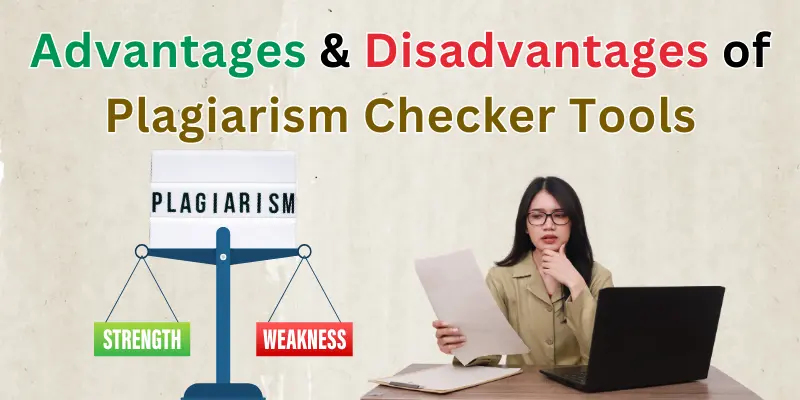
But here comes the question: Are they always a perfect solution? Or it may have some disadvantages too.
So to clear up your question in this article, we will cover the advantages and disadvantages of plagiarism checker tools for content writers.
Once you are familiar with them all, you can avoid unnecessary stress and enhance your writing.
Let's jump on this journey.
Advantages of Plagiarism Checker Tools
A good plagiarism checker offers some benefits that make it integral for content writers:
- Saves Time
- Improves Originality
- Detects Accidental Copying
- Boosts Credibility
- Helps Follow Rules
- Enhances SEO
- Provides Source Links
- Easy to Use
- Works for Many Languages
- Prevents Rejection
Let me guide you about each benefit in detail.
1. Saves Time
I must say that checking for plagiarism manually can take a lot of time, especially when dealing with long documents. Plagiarism checkers make this process much faster by scanning content within seconds. Writers no longer have to compare their text with multiple sources, as the tool does it instantly.
- Scans large documents within seconds.
- Reduces the time spent on manual checking.
- Allows writers to meet tight deadlines.
- Helps students and professionals work efficiently.
2. Improves Originality
Original content is always better than copied content, and I believe that plagiarism checkers help writers make their work unique. These tools highlight duplicate text, making it easier to rewrite and improve.
- Helps writers create fresh content.
- Shows copied text so it can be reworded.
- Encourages creativity in writing.
- Prevents the risk of unintentional plagiarism.
3. Detects Accidental Copying
A plagiarism checker helps find such accidental duplication and allows writers to make changes before publishing. This is especially important for students and researchers who must ensure their work is completely original.
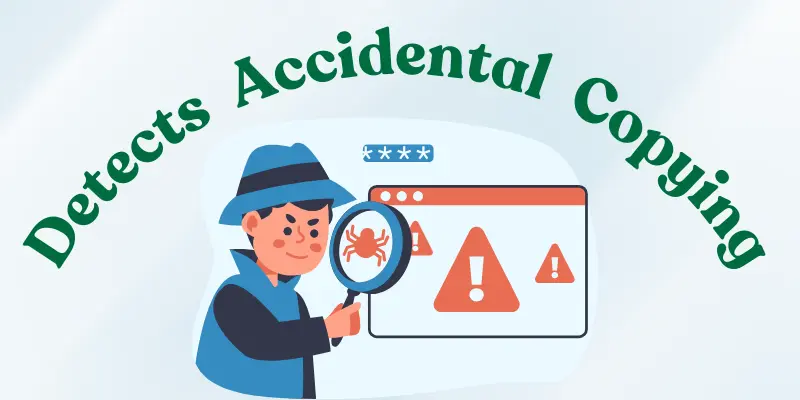
- Finds unintentional plagiarism.
- Helps writers correct mistakes before submission.
- Ensures academic integrity for students.
- Reduces the risk of copyright issues.
4. Boosts Credibility
If you want people to trust your work, it must be original. I strongly believe that plagiarism checkers help writers maintain credibility by ensuring that their content is unique. Readers, clients, and even search engines prefer original work, so using a plagiarism checker can make a big difference.
- Builds trust with readers and clients.
- Ensures content is high quality and reliable.
- Improves a writer’s professional reputation.
- Helps businesses maintain their brand image.
5. Helps Follow Rules
Different industries, including academic institutions, publishing companies, and online businesses, have strict rules about plagiarism. Using a plagiarism checker helps writers follow these rules and avoid trouble.
- Helps writers follow ethical writing guidelines.
- Ensures compliance with academic and publishing rules.
- Reduces the risk of legal consequences.
- Protects businesses from copyright claims.
6. Enhances SEO
Search engines like Google do not rank copied content well. I believe that plagiarism checkers help website owners and bloggers create original content, which improves their ranking.
- Prevents websites from getting penalized by search engines.
- Improves search engine ranking.
- Increases website traffic and engagement.
- Helps businesses grow online.
7. Provides Source Links
Sometimes, it’s important to know where a piece of information came from. I must say that plagiarism checkers not only detect copied text but also provide links to the original sources. This makes it easier for writers to cite their references properly and avoid unintentional plagiarism.
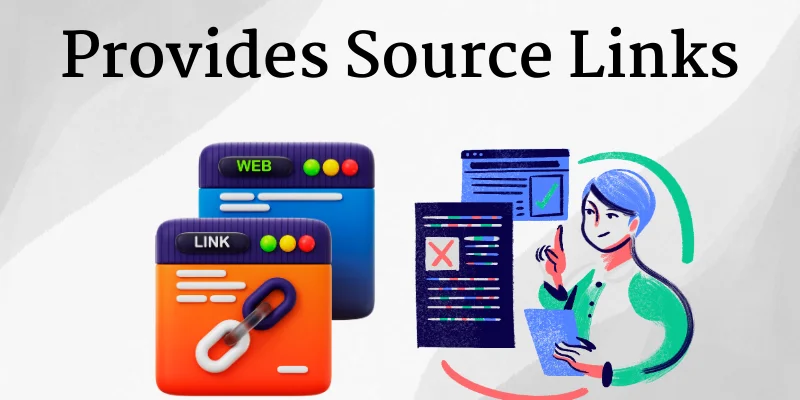
- Helps writers give proper credit to sources.
- Makes research and citation easier.
- Ensures transparency in content writing.
- Avoids accidental copyright violations.
8. Easy to Use
Not everyone is a tech expert, and I strongly believe that plagiarism checkers are designed to be user-friendly. Most of these tools work with just a copy-paste or file upload, making them accessible even to beginners.
- Simple interface that anyone can use.
- Quick results with easy-to-understand reports.
- Works on different devices and platforms.
- No special training required to use the tool.
9. Works for Many Languages
Writing is not limited to just one language. I must say that some plagiarism checkers can detect copied content in multiple languages. This is especially useful for global writers, businesses, and researchers who work with multilingual content.
- Helps writers in different languages check their work.
- Supports international businesses.
- Useful for academic research in different languages.
- Expands opportunities for writers worldwide.
10. Prevents Rejection
Imagine working hard on an article, only to have it rejected because of plagiarism. I believe that using a plagiarism checker helps writers avoid such disappointments by ensuring their work is original before submission. Whether it’s for academic, business, or creative writing, originality is key to acceptance.
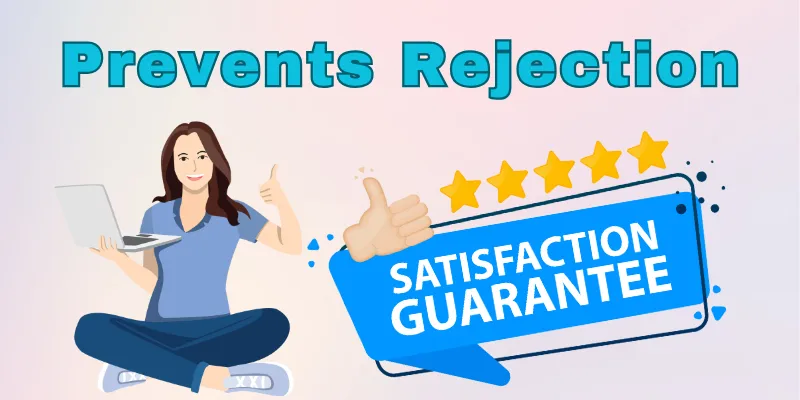
- Reduces the chances of content rejection.
- Ensures work meets originality requirements.
- Helps students avoid academic penalties.
- Increases approval rates for freelancers and bloggers.
Disadvantages of Plagiarism Checker Tools
Despite their many advantages, plagiarism tools also have some disadvantages that the writers should be informed of:
- Not Always Accurate
- Paid Tools Are Costly
- Depends on Internet
- May Not Detect Paraphrasing
- Limited Database
- Slows Down Workflow
- Privacy Concerns
- Complex for Beginners
- False Positives
- Can’t Judge Intent
Though some disadvantages exist and pose some challenges, being aware of them may assist writers in making prudent choices on plagiarism detectors.
1. Not Always 100% Accurate
I must say that plagiarism checkers are helpful, but they do not always detect all copied content. Some tools might miss paraphrased text, while others might flag common phrases as plagiarism even when they are not copied.
- May not detect well-paraphrased content.
- Can flag common or general phrases incorrectly.
- Some tools have limited access to paid or private content.
- Results may vary depending on the database they use.
2. Expensive for Full Features
Many plagiarism checkers offer free versions, but I believe that most advanced features are locked behind a paid plan. This can be costly for students, freelance writers, or small businesses that need frequent plagiarism checks.

- Free versions have limited checks per day.
- Paid plans can be expensive for regular use.
- Some tools charge extra for deep search options.
- Not all writers can afford premium plans.
3. Sometimes Flags Own Content
I must say that some plagiarism checkers mistakenly flag a writer’s own content as copied. If you are updating an old blog or working on multiple articles about a similar topic, the tool may detect similarities and count them as plagiarism.
- Can mark previously published work as copied.
- Creates confusion for writers and editors.
- Makes it difficult to repurpose old content.
- Requires extra effort to prove originality.
4. Over-Reliance on the Tool
Plagiarism checkers are useful, but I believe that relying on them too much can be a problem. Some writers may stop focusing on improving their writing skills and depend only on the tool for originality.
- Writers may become less careful about originality.
- Can reduce creativity in writing.
- May create laziness in checking sources manually.
- Some tools do not suggest how to fix plagiarism issues.
5. Privacy and Security Concerns
I must say that not all plagiarism checkers are safe. Some online tools may store or share uploaded content, creating a risk of data theft or unauthorized use of content.
- Some tools keep a record of uploaded content.
- Risk of content being leaked or copied.
- Writers need to be careful with sensitive or unpublished work.
- Free tools may sell data to third parties.
6. Internet Dependence
Most plagiarism checkers work online, and I believe that this can be a problem for writers who do not always have a stable internet connection. If a writer is working offline, they cannot use the tool until they connect to the internet.
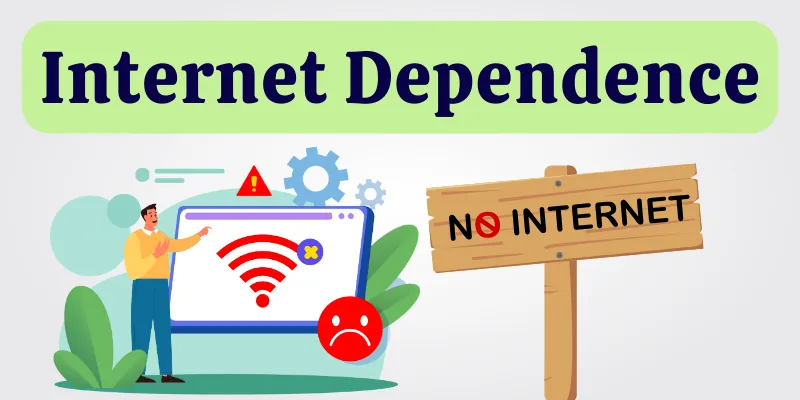
- Cannot be used without an internet connection.
- May not work properly in areas with slow internet.
- Some tools take time to load results on weak networks.
- Not useful for writers who prefer working offline.
7. Limited to Text-Based Content
I must say that plagiarism checkers only work well for written content. They do not detect copied images, videos, or other multimedia elements, which can still be a form of plagiarism.
- Cannot check plagiarism in images or graphics.
- Does not detect copied video or audio content.
- Limited in identifying plagiarism in creative works.
- Not effective for all types of digital content.
8. Does Not Teach Writing Improvement
Plagiarism checkers show copied text, but I believe that they do not help writers learn how to improve their writing style or originality. Writers still need to develop their skills to create high-quality, unique content.
- Does not offer guidance on improving writing skills.
- Cannot replace human creativity.
- Some tools do not provide detailed feedback.
- Writers need additional tools or learning resources.
9. Inconsistent Results Across Tools
I must say that different plagiarism checkers give different results. A writer may check the same content in two tools and get different plagiarism percentages, which can be frustrating.
- Each tool has a different database.
- Some tools detect more copied content than others.
- Results may not be accurate across all platforms.
- Writers may need to use multiple tools for better accuracy.
10. Can Cause Unnecessary Fear
Some writers, especially students or new freelancers, might worry too much about plagiarism because of false positives. I believe that this can lead to unnecessary stress and extra effort to change content that is already original.
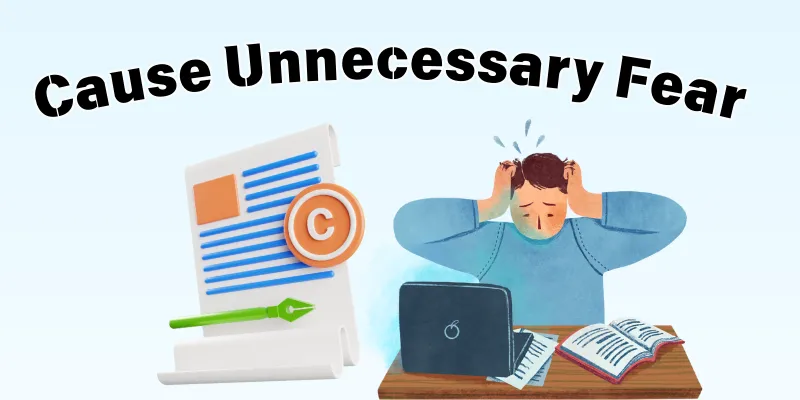
- False positives can make writers feel anxious.
- Can lead to unnecessary rewriting of original content.
- May affect confidence in writing skills.
- Some writers over-edit their work due to fear of plagiarism.
Balancing the Use of Plagiarism Checkers
The balance should be in understanding how much to use them and, at the same time, developing a knack for writing originally. Here are some tips on how to integrate plagiarism checkers into the writing process effectively:
- Know its limitations. Understand the capabilities and limits of the checker being used. Knowing what it can and cannot do will help utilize the tool even better.
- Complement with manual checks. This is not to say such instruments are bad, but this software should not replace your work. Always reread your paper carefully to catch what this tool may have missed.
- Choose the right tool. Opt for plagiarism checkers that are known to deliver accurate results and safeguard your privacy. Pay attention to reviews and expert opinions when choosing reliable options to try.
- Stay updated. This technology is continuously undergoing change and upgrade. New features may be added, or existing processes may be improved to make them more accurate and faster.
- Educate yourself. Continue educating yourself on plagiarism and the need for originality in writing. Understanding the ethical and legal implications will reinforce the value of producing unique content.
- Use them as learning tools. Think of these checkers as learning instruments, not just verification tools. Apply them to locate areas for improvement in your writing and develop a deeper understanding of what constitutes plagiarism.
By integrating these practices, content writers can enjoy the benefits of such detectors while minimizing their disadvantages in creating quality, original content.
Last Words
Plagiarism checkers have their own sets of advantages for content writers: maintaining originality, credibility, saving time, and legal protection. They also have their set of disadvantages: false positives, limited access, dependence on technology, and privacy concerns.
The best way to use plagiarism detectors is to balance their use with developing strong writing skills. The knowledge of benefits and drawbacks, added to best practices, is applied by content authors to create unique quality content that would leave a mark in the competitive market.



Please Write Your Comments